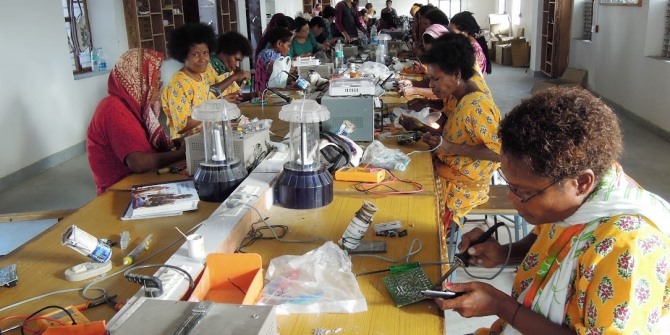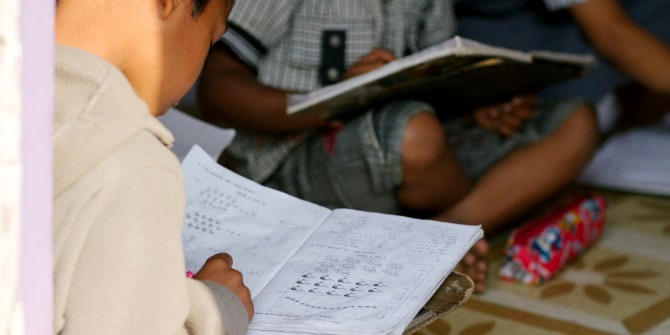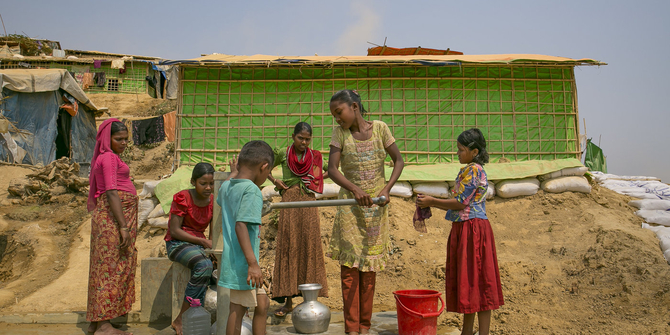India is fast reaching the point where substantial government investment in the health system is required to maintain its impressive trajectory in improving population health whilst insuring its population against catastrophic health expenditure. Miqdad Asaria (LSE) argues why his research suggests that increasing government health expenditure in India’s complex and highly heterogeneous healthcare system could yield huge health benefits for the population.
India has experienced a long and sustained period of economic growth since independence. This is reflected in the health of the population for whom life expectancy at birth has rapidly increased from 41 years in 1960 to almost 69 years in 2016, with infant mortality rates dropping from 131 per 1000 live births to 34 over the same period. As countries get richer and nutrition, shelter and other basic needs of the population are largely met, healthcare begins to play an ever-increasing role in unlocking further gains in population health.
In turn, the demand for healthcare increases and in the absence of public provision, healthcare is purchased by individuals from private providers. This out of pocket spending on healthcare often becomes a major cause of financial impoverishment in the population. India is fast reaching the point where substantial government investment in the health system is required to maintain its impressive trajectory in improving population health whilst insuring its population against catastrophic health expenditure.
The current Indian healthcare system is complex and highly heterogenous. Whilst health is officially the responsibility of the state governments, healthcare is delivered and financed through a mix of central government vertical programmes to tackle particular diseases as well as state led primary and secondary care provision and health insurance programmes to cover tertiary care. Healthcare is delivered by both private and public providers working across a unique mix of allopathic, Ayurveda, Yoga, Unani, Siddha, Homoeopathy as well as other forms of traditional medicine. Alongside this government provision of healthcare, there is also a large parallel private health system, largely paid for out of pocket, that accounts for approximately two thirds of total health expenditure in the country. Government health expenditure is modest at approximately 1% of GDP as compared to a global average of 6% of GDP. Countries that have achieved universal health coverage for their populations such as the UK spend closer to 8% of GDP on healthcare.
The case for public investment in healthcare in India
As governments begin investing in healthcare there are many low cost and highly effective interventions, particularly in primary care, that can quickly improve population health and through early intervention prevent easily treatable illnesses developing into much more complex conditions requiring sophisticated and expensive treatments. As government health expenditure grows these highly cost-effective interventions are gradually exhausted and investment turns to more expensive interventions to achieve further health gains. There eventually comes a point in any health system where the government is no longer willing to pay the ever increasing price for relatively modest further health gains – such as with the case of the notoriously expensive cancer drugs in the UK.
In a recent piece of research conducted with colleagues at the Centre for Health Economics, University of York, we look at how much it costs in terms of public investment to achieve additional health gains in India, both at the national level and across a selection of the larger states – in economics this is referred to as the marginal productivity of the health system. We measured health gains in terms of years of life in full health – measured as disability adjusted life years (DALYs) – accounting for both the life-extending effects of healthcare as well as for the impact of healthcare on improving quality of life by reducing morbidity. We examined how changes in government health spending result in changes in population health as measured in DALYs. Such measures are often used as a threshold against which to judge whether or not a health investment is cost-effective. Those healthcare investments providing health gains at a lower cost than the marginal productivity of the health system are deemed as good value for money within the existing health budget, whilst those healthcare investments providing health gains at a higher cost than can be achieved with existing healthcare investments require a case to be made for additional health budget to justify investment in them.
Where empirical evidence is lacking, countries often use a benchmark of between 1- and 3-times GDP per capita to determine cost-effectiveness. In the case of India this equates to between ₹1,25,249 and ₹3,75,747 per DALY. As compared to these benchmarks our research finds that public investment in health is incredibly good value for money in India with an additional DALY of health costing only ₹19,182 on average across the country. As we might expect there is significant variation in this marginal productivity across the country with those states that are currently and have historically been spending less on healthcare such as Uttar Pradesh – where government health expenditure amounts to only ₹581 per capita, life-expectancy at birth is 64.8 years, 51.1% of children are fully immunised and the infant mortality rate is 43 per 1000 live births – are able to purchase an additional DALY for ₹9,615 under half the national average cost. At the other extreme we find states such as Kerala – where government health expenditure is more than double that of Uttar Pradesh at ₹1,208 per capita, life expectancy at birth is 75.1 years, 82.1% of children are fully vaccinated and the infant mortality rate is 10 per 1000 live births – for whom an additional DALY will cost ₹23,783 substantially higher than the national average but still at a small fraction of the often quoted 1- and 3-times GDP benchmarks.
Reflections on PM-JAY and the risks of missing the low hanging fruit
Our findings suggest that increasing government health expenditure in India can yield huge health benefits for the population. We find that in many states with historically low levels of government health expenditure additional funding can be used to invest in proven low cost and highly effective primary care interventions to substantially reduce infant mortality rates, improve rates of childhood vaccination and hence improve life expectancy. Other states that have already exhausted much of the low hanging fruit and perform well on these basic health indicators are now looking to improve population health further by funding more expensive tertiary care investments.
The Indian government’s current health strategy referred to as the National Health Protection Scheme or Ayushman Bharat – Pradhan Mantri Jan Arogya Yojana (PM-JAY) – has a limited focus on and budget allocation for primary care through its investment in Health and Wellness Centres, and a much greater focus on and budget allocation towards providing health insurance for secondary and tertiary care. Whilst we have seen that government investment in healthcare in India is much needed and can yield great health benefits, there is a risk that the current strategy incentivises investment in sophisticated and expensive tertiary care through its insurance function both in states where this is the next logical step for the health system as well as in states where even basic primary care provision is lacking. States should consider carefully whether and in which form to adopt such a scheme to ensure that they maximise the impact that their health expenditure has on improving population health and minimise the impoverishing impact of out of pocket health expenditure on their populations. What is optimal for Kerala may not be optimal for Uttar Pradesh.
This article gives the views of the author, and not the position of South Asia @ LSE blog, nor of the London School of Economics. Please read our comments policy before posting. Photo credit: Martin Brosy Unsplash;
Dr Miqdad Asaria is Assistant Professorial Research Fellow at LSE Health. His research focuses on the interplay between health systems and socioeconomic inequality. He tweets @miqedup







